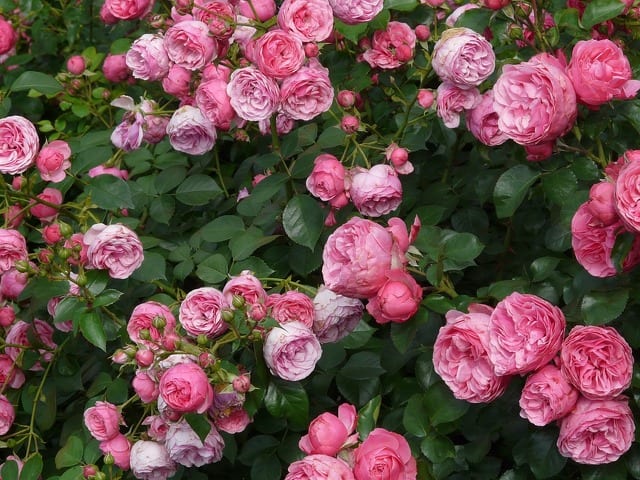This sunny season, many gardeners harness the bold colors and tastes of some summer blooms to enliven their otherwise ordinary culinary presentations.
When I was operating a bed-and-breakfast in Bellefonte, I would slip a few orange and yellow nasturtium or lavender violet petals from my garden onto plates as garnishes, adding some pizzazz to our early-morning fare. Guests were often surprised to know that these flowers could be eaten. Some would cautiously sample, while others were very wary. Some dove right in.
I am certainly not the first to use flowers this way. Traditionally, according to a North Carolina State University Extension site, many types of cooking, including European, Asian, East Indian, Victorian English, Middle Eastern and even Early American used them as food.
Since the 1980s there has been renewed interest in flowers for use in haute cuisine, due to their fragrance, color and taste. Not only that, but edible flowers actually grow not just on annuals, but also on some biennials, perennials, trees, shrubs and vines.
However, before beginning any discussion of possible flowers, there are some important warnings to keep in mind.
First, be sure to identify flowers by genus and species to confirm that they are edible prior to eating. N.C. State also features a list of certain edible flowers in their “Choosing and Using Edible Flowers” article from its cooperative extension site.
Second, eat only those flowers that have been grown with either no pesticides or only pesticides labeled for edible crops (and ones where animal manure has not been applied to the surrounding soil for the past two months).
Also, do not use plants that have been grown on the roadside or purchased at a florist, nursery or garden center, unless they are specifically labeled as edible. In other words, if you can grow them organically in your own garden or know someone who does, that is ideal.
Once again, extension services, such as Penn State, offer guidance for growing edible flowers, addressing the desired type of soil, mulching, watering and hand-picking for pest control. It’s very similar to growing ornamentals, except that only pesticides approved for edible crops (i.e., vegetables) are used.
Here is a sampling of some easy to find, yet delicious blooms to savor in Pennsylvania gardens.
■ Bee balm
Apparently, the leaves and flowers make a good substitute for oregano, with its warm spicy flavor, and it can be fresh or dried. It can be used for a dry rub or marinade for meat or fish and individual salad petals can be sprinkled into a green salad or on top of a light-colored soup.
■ Roses
All roses produce edible petals, and the more fragrant the flower, the tastier the petal. Raw petals can be used in salads, to decorate cookies and cakes or to make jam or simple syrup, an ingredient used in cocktails, sorbet or icing.
They are also included in Middle Eastern and Indian recipes, and are an essential ingredient in the Moroccan spice mix ras el-hanout.
■ Rose of Sharon
Though the flowers do not necessarily have an unusual taste, the flowers make great bowls for serving cottage cheese or dips. Or, stuff them with herbed goat cheese, dip in beaten egg and breadcrumbs, and bake them. The petals can also be used raw in salads.
■ The common orange daylily
Interestingly, this straight species, which includes four different edible parts (young shoots, tubers, buds and flowers) is often used in Chinese foods, such as moo shu pork. Buds and flowers can be harvested from mid-summer to summer.
Two cups of daylily buds, picked from the time they are green until just before they open, can be sautéed in 2 tablespoons of olive oil and 1 tablespoon of minced garlic or onion, just as is done with green beans, and served warm.
The buds do have a green bean-ish flavor and the petals can be used to thicken liquids or added to risottos or pasta dishes for color.
Common sense dictates how edible flowers are harvested. It’s a good idea to conduct a taste test before harvesting large amounts of a certain flower and then pick the flowers at their peak in the cool of the day, prior to the dew evaporating.
Store them in a cool place after harvesting. Long stemmed flowers can be placed in a container of water, and short-stemmed flowers should be picked only three to four hours before using and stored in a refrigerator, where a damp paper towel in their plastic bag will help to keep the humidity higher.
Edible flowers can be used fresh, but they can also be candied, frozen into ice cubes to be used in drinks, or dried for future use by being stored in an airtight container in a cool dark location.
I always wash all flowers thoroughly before eating them and remove any insects, as well as the pistil and stamens and any possible white base where the petal was attached to the flower. (It isn’t recommended that allergy or asthma suffers eat them because of a possible sensitivity to pollen.) Also, introduce flowers into the diet in small quantities, one species at a time so that the digestive tract can adjust.
Finally, should you want to increase your expertise, any edible flower cookbook should include the following information (this from Penn State Extension’s “A Consumer Guide to Purchasing, Producing, Storing, and Using Edible Flowers): pictures of the flower/plant, description of appearance, what part is edible, how it can be used and the scientific name (genus and species) for identification.
And remember, the best thing about edible flowers is that they serve a dual purpose: They are as lovely in the garden as they are tasty in the kitchen.



